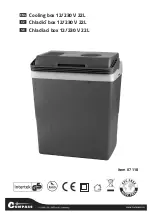
27
Communication Wiring -- Protocols
General —
Protocols are the communication languages spoken by
control devices. The main purpose of a protocol is to
communicate information in the most efficient method
possible. Different protocols exist to provide different
kinds of information for different applications. In the BAS
application, many different protocols are used, depending
on manufacturer. Protocols do not change the function of
a controller; just make the front end user different.
The RTU Open can be set to communicate on four
different protocols: BACnet, Modbus, N2, and LonWorks.
Switch 3 (SW3) on the board is used to set protocol and
baud rate. Switches 1 and 2 (SW1 and SW2) are used to
set the board’s network address. See Fig. 46 and 47 for
protocol switch settings and address switches. The 3rd
party connection to the RTU Open is through plug J19.
See Fig. 48 for wiring.
NOTE
: Power must be cycled after changing the SW1--3
switch settings.
Contact your Bryant applications engineer for more
detailed information on protocols, 3rd party wiring, and
networking.
SW3 Protocol Selection
PROTOCOL
DS8
DS7
DS6
DS5
DS4
DS3
DS2
DS1
BACnet MS/TP
(Master)
Unused
OFF
OFF
OFF
ON
OFF
Select Baud Select Baud
Modbus
(Slave)
Unused
OFF
OFF
ON
ON
OFF
Select Baud Select Baud
N2
(Slave)
Unused
OFF
OFF
OFF
ON
ON
OFF
OFF
LonWorks
Unused
ON
ON
OFF
ON
OFF
OFF
OFF
NOTE:
DS = Dip Switch
BACnet MS/TP SW3 example shown
Baud Rate Selections
BAUD RATE
DS2
DS1
9600
OFF
OFF
19,200
ON
OFF
38,400
OFF
ON
76,800
ON
ON
C07166
Fig. 46 -- RTU Open SW3 Dip Switch Settings
C10815
Fig. 47 -- RTU Open Address Switches
C10816
Fig. 48 -- Network Wiring
558J

































